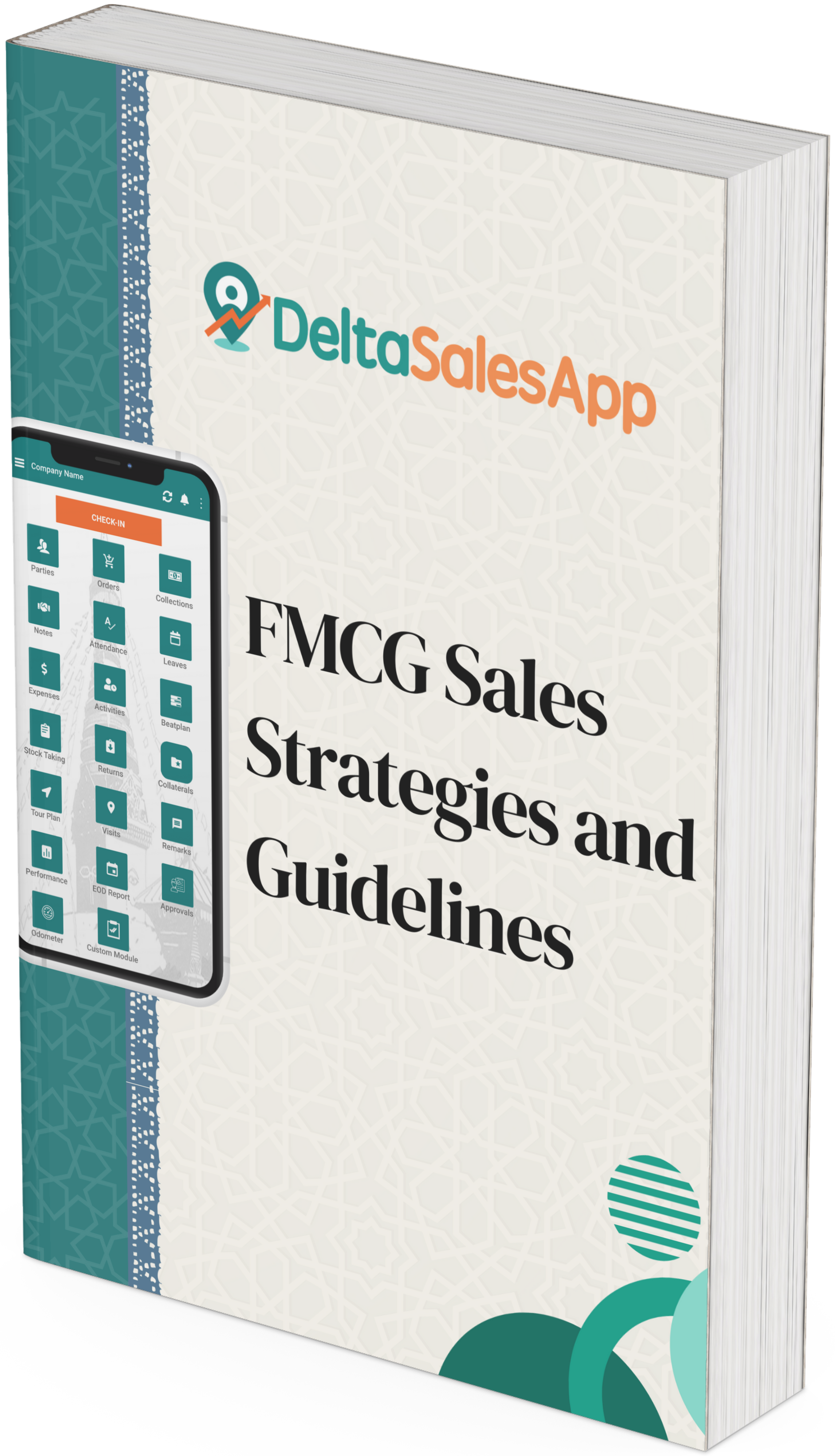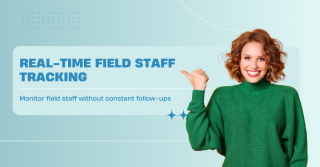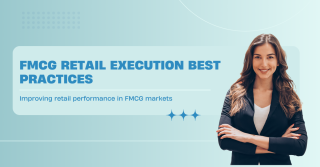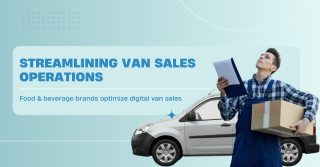What’s Keeping CPG Teams Awake? Retail Execution 2025
_1747122065.webp)
The retail landscape has entered a new phase in 2025, bringing both promising opportunities and pressing challenges for consumer packaged goods (CPG) brands. As market dynamics shift and consumer expectations evolve, one thing is clear: strong retail execution has become the cornerstone of success for CPG brands navigating the complexities of today’s omnichannel world.
So, what exactly is keeping CPG teams up at night in 2025? From stock-out risks to in-store visibility and category competition, many factors are shaping the field sales conversation. But more importantly, what are high-performing CPG teams doing about it?
Let’s explore the five biggest concerns in CPG retail execution in 2025 — and the smart, tech-enabled strategies brands are using to overcome them.
🏬 Fewer Store Visits, Bigger Baskets
Today’s shoppers are making fewer trips to physical stores but spending more per visit. While this shift may sound positive, it comes with a challenge: fewer chances for your product to be discovered, especially if it’s out-of-stock, poorly merchandised, or lost behind competitor displays.
For field teams, this change reduces the number of opportunities to impact sales, especially in high-velocity product categories. One missed shelf audit or out-of-stock incident can cost thousands in lost sales.
✅ Solution:
CPG brands are responding by optimizing their store coverage strategies and shifting focus to high-priority accounts. Instead of trying to cover every outlet with equal frequency, field teams now use field sales automation tools to:
Identify high-opportunity stores using sales and inventory data
Audit displays and verify planogram compliance
Capture shelf images for instant feedback
Log corrective actions in real time
These tools integrate seamlessly with sales tracking systems, allowing managers to assess which store visits are yielding conversions and ensuring that the right products are in the right place at the right time.
🍽️ Sampling and Trial Barriers
Consumer sampling once played a critical role in product trial and awareness. However, traditional in-store demos have lost effectiveness with stricter store policies, shifting shopper habits, and increased hygiene concerns.
This is especially problematic for emerging brands that rely on trials to break into established categories or introduce innovative products. Without face-to-face interaction, how do you generate trust and encourage first-time purchases?
✅ Solution:
Modern CPG companies are replacing in-store demos with digitally enabled trial strategies like:
Bundled samples with complementary products
Digital coupons triggered by geofencing or in-app behavior
QR-code-based promotions placed directly on displays
Influencer-led video reviews and user-generated content
These digital-first tactics not only increase reach but also produce better consumer insights. When integrated into a sales performance tool, field reps can track engagement metrics, coupon redemption rates, and customer feedback, turning every trial into measurable retail execution data.
👀 Visibility Gaps
One of the persistent issues in CPG retail execution in 2025 is the disconnect between headquarters and what’s happening in stores. Sales data alone can’t reveal why a product is underperforming.
Is it misplaced? Out of stock? Hidden behind another brand? Or suffering from pricing errors?
This lack of on-the-ground visibility leads to misaligned strategies and delayed responses, costing both revenue and reputation.
✅ Solution:
To close this gap, CPG teams are arming field reps with mobile tools that capture:
Real-time photos of shelves and displays
Stock status and fill rates
Competitor presence and promotions
Compliance with planograms and pricing
This bottom-up visibility, fed through a sales tracking system, creates a dynamic feedback loop. HQ can now react immediately, optimize supply chains, and support field reps with timely promotions or merchandising assets.
🧃 Product Demand Outpacing Shelf Space
New product categories are booming — plant-based options, low-sugar alternatives, eco-friendly packaging, and clean-label formulations. But shelf space hasn’t kept pace with innovation.
In a competitive retail environment, even high-performing products struggle for visibility if they don’t have the right facings or shelf presence.
✅ Solution:
Today’s successful CPG brands are winning shelf space not just with strong products but with data-driven storytelling. Field reps, empowered by field sales automation software, are helping pitch shelf gains by presenting:
Store-level sales trends and growth metrics
Visual shelf audits and facings analysis
Competitor benchmarking and category gaps
Shopper behavior observations from field visits
By collecting and reporting this data via a sales performance tool, reps become strategic partners to retail buyers, showing not just product demand but how their brand can grow the entire category.
🌍 Inconsistent Execution Across Regions
Retail execution inconsistency remains a major pain point for growing CPG brands. One store may have a perfect display, while another location, even in the same chain, is out of stock or displaying expired promotional tags.
This lack of uniformity hurts brand image and undermines promotional campaigns.
✅ Solution:
Top CPG teams are attacking this issue by standardizing retail execution processes. They're rolling out:
Digital checklists for every store visit
Visual merchandising guidelines tailored by region
Geo-tagged photo uploads for compliance verification
Real-time digital scorecards that measure visit quality
Through field sales automation and sales tracking systems, managers can monitor execution in real time, pinpoint underperforming regions, and provide coaching or corrective actions quickly. This elevates brand consistency, reduces compliance errors, and ensures every rep adds measurable value.
🧭 Key Takeaways: Retail Execution That Drives Results
If there’s one thing that defines successful CPG retail execution in 2025, it’s the ability to be proactive, data-driven, and agile. Gone are the days of relying solely on past sales or periodic field reports.
Today’s top-performing CPG brands are rethinking their strategies by:
Empowering field reps with mobile, intelligent tools
Using sales tracking systems to connect field data to HQ decisions
Elevating every store visit with purpose, structure, and insights
Measuring not just the quantity of visits, but the quality of outcomes
This combination of technology, accountability, and agility is helping brands not just survive — but thrive — in a retail landscape filled with disruption and opportunity.
🛠️ 5 Smart Moves for CPG Retail Execution in 2025
To wrap it all up, here are five strategic shifts that top CPG teams are using to win at the shelf in 2025:
📍 Prioritize High-Impact Stores
Focus field resources where they’ll make the biggest difference. Use data from your sales performance tool to map store value, optimize visit frequency, and direct effort to where it matters most.
📸 Leverage Real-Time Data
Capture shelf photos, inventory snapshots, and compliance metrics during visits. Feed this data into your sales tracking system for instant decision-making.
📦 Reimagine Sampling
Replace traditional demos with QR codes, geo-targeted offers, influencer campaigns, and bundling. These are easier to scale and track within field sales automation platforms.
🧠 Use Store-Level Insights
Let field reps become the eyes and ears of your brand. Collect qualitative and quantitative feedback during visits to inform promotions, packaging, and placement strategies.
📊 Measure What Matters
Track visit quality, not just volume. Use KPIs like on-shelf availability recovery, display fixes, and promotion execution accuracy to measure rep effectiveness.
🌟 Final Thoughts
Retail execution in 2025 is more complex — and more important — than ever. The CPG brands that are thriving are those that treat execution not as a routine task, but as a competitive weapon.
By embracing tools like sales tracking systems, sales performance platforms, and field sales automation, forward-thinking teams are ensuring every visit counts, every shelf is optimized, and every rep is a driver of growth.
The future of CPG success belongs to those who execute smarter.
❓FAQs on CPG Retail Execution in 2025
1. What is retail execution in the CPG industry?
Retail execution refers to how well consumer packaged goods (CPG) brands implement their sales, marketing, and merchandising strategies in retail stores. It involves activities like shelf audits, stock monitoring, promotion tracking, and compliance checks — all carried out by field reps to ensure that products are visible, available, and aligned with brand standards in every store.
2. How can sales performance tools improve CPG retail execution?
A modern sales performance tool enables CPG brands to track and evaluate field team activities in real-time. It helps reps prioritize high-value stores, document shelf conditions with photos, measure display compliance, and ensure planogram accuracy. This data-driven approach boosts accountability, improves rep productivity, and increases sales per visit.
3. What are the benefits of using field sales automation in 2025?
Field sales automation streamlines repetitive tasks like route planning, reporting, and data collection, allowing reps to focus more on in-store execution. It ensures faster audits, real-time inventory updates, and automatic check-ins — saving time while improving retail coverage and execution quality across all regions.
4. Why is a sales tracking system essential for CPG teams?
A sales tracking system connects store-level activities with sales outcomes. It enables managers to monitor what’s happening on the ground, such as stock-outs, display issues, or promotions, and correlate them with sales data. This helps identify execution gaps, optimize field strategies, and drive consistent retail performance.
5. How can brands maintain consistency in retail execution across multiple regions?
To ensure consistency, brands should use digital checklists, visual merchandising guidelines, and scorecards — all integrated within a centralized field sales automation system. This ensures every rep follows the same standards, regardless of location, and allows managers to monitor execution metrics and performance benchmarks in real-time.
Also Check:
👉Beyond Visibility: Turning Retail Data into Revenue in 2025
👉 CPG Data Analytics: a Complete Guide to Smarter Sales
See What Users Say About Us!
Delta Sales App is highly rated on leading review platforms. You can check what real users are saying about us.









